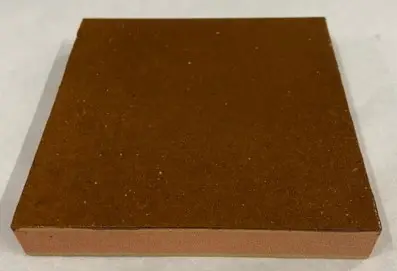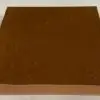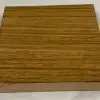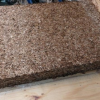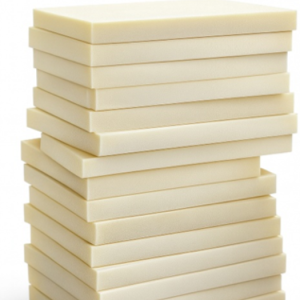Both Phytic acid and chitosan are present in nature and can be produced from different biobased feedstocks, can create polyelectrolyte complex (PEC) for acting as flame retardant. They are also suitable for being incorporated in coatings/paints to add fire protection to insulating structures in construction. In BIO4EEB bio-based phosphorous nitrogen polyelectrolyte complexes (PECs) based in chitosan and phytic acid will be used as innovative intumescent additives for coatings for solvent-free production of bio-based products.
Coating for fire protection applications based on bio-derived polyelectrolyte complexes which are dispersed on an adhesive for better application by roller or spray.
Product development
The focus of this task has been the synthesis of polyelectrolyte complexes (PECs) based on chitosan and phytic acid, specifically tailored for application as bio-based flame retardants in coatings for constructionrelated applications. The aim was to develop a sustainable, bio-based flame-retardant additive suitable for incorporation into coatings used in the construction industry, achieved through mechanochemical synthesis using a twin-screw extruder (TSE).
The mechanochemical synthesis process in an extruder is influenced by three primary energy sources: mechanical, thermal, and chemical energy. Mechanical energy is generated by the shear stress applied through the screw speed of the extruder, where higher speeds result in greater mechanical input. Thermal energy comes from the temperature profile set along the extruder’s barrel, while chemical energy depends on the stoichiometric ratios of the reactants involved in the synthesis process.
A comprehensive Design of Experiments was established to investigate the effects of both chemical and mechanical parameters on the synthesis of PECs. Different chemical ratios between chitosan and phytic acid were utilized to enhance the interaction between these polyelectrolytes. The aim was to determine the optimal stoichiometry that would result in a stable and effective PEC with the highest possible phosphorus-tonitrogen (P_N) ratio.
Mechanical parameters were systematically adjusted using a twin-screw extruder (TSE). Key variables included temperature profile, screw design, production rate, and screw speed. The temperature profile was optimized to provide the ideal thermal environment for the reaction, balancing sufficient heat to drive the mechanochemical process while avoiding thermal degradation of the biopolymers.
Product safety
- For safe use of the product, the following precautions are recommended:
- Avoid skin and eye contact. Wear chemicalresistant gloves and protective goggles during application.
- Do not inhale vapours or aerosols. Work in well-ventilated areas; for intensive application, use a respirator with an organic vapour filter (A2 type).
- Keep containers tightly closed after use and store between 2-35 °C in a dry, ventilated area.
- If accidental contact occurs, wash skin with water and soap; if it reaches the eyes, rinse for 10 minutes and seek medical advice

